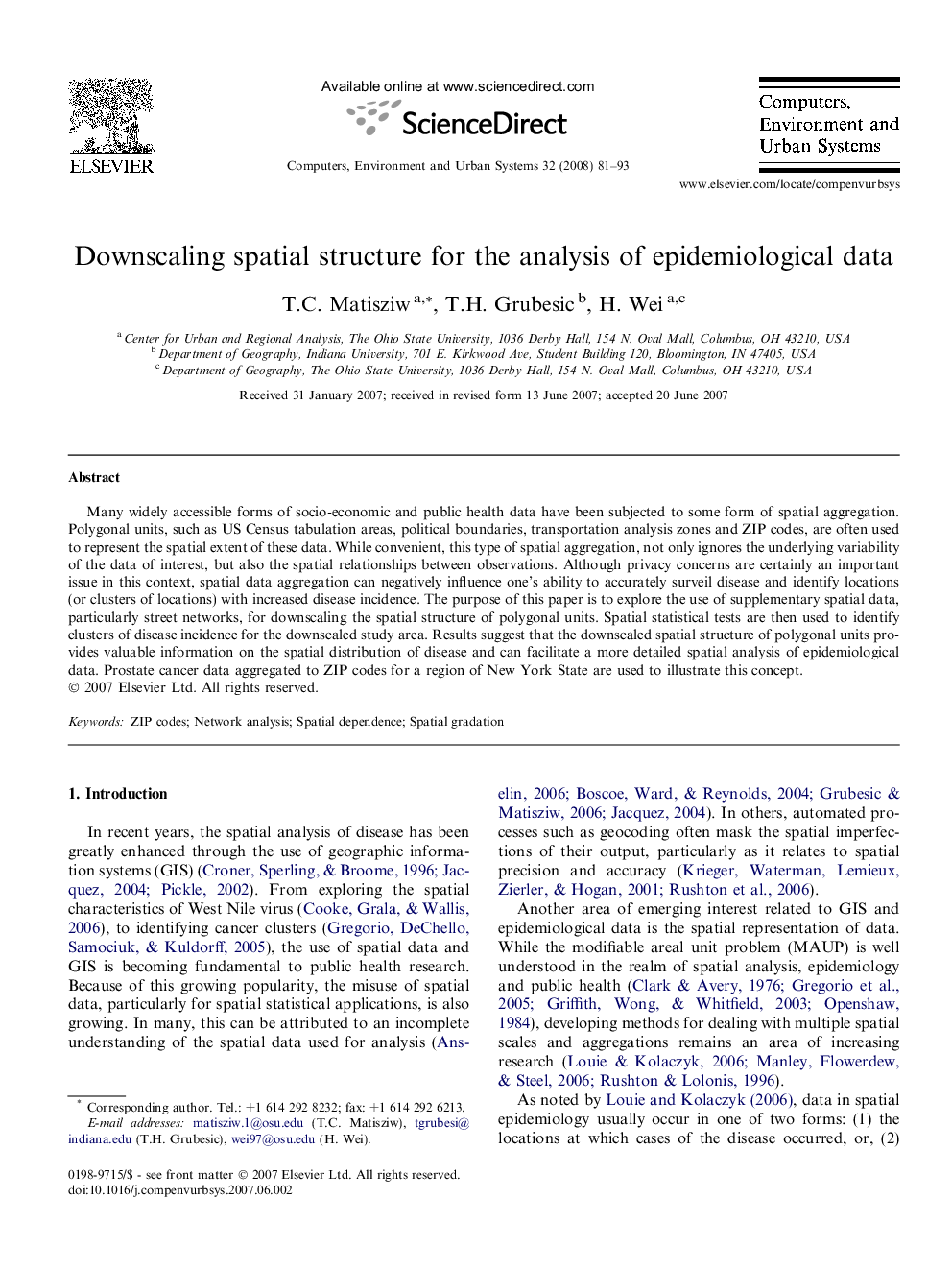| کد مقاله | کد نشریه | سال انتشار | مقاله انگلیسی | نسخه تمام متن |
|---|---|---|---|---|
| 506652 | 864935 | 2008 | 13 صفحه PDF | دانلود رایگان |

Many widely accessible forms of socio-economic and public health data have been subjected to some form of spatial aggregation. Polygonal units, such as US Census tabulation areas, political boundaries, transportation analysis zones and ZIP codes, are often used to represent the spatial extent of these data. While convenient, this type of spatial aggregation, not only ignores the underlying variability of the data of interest, but also the spatial relationships between observations. Although privacy concerns are certainly an important issue in this context, spatial data aggregation can negatively influence one’s ability to accurately surveil disease and identify locations (or clusters of locations) with increased disease incidence. The purpose of this paper is to explore the use of supplementary spatial data, particularly street networks, for downscaling the spatial structure of polygonal units. Spatial statistical tests are then used to identify clusters of disease incidence for the downscaled study area. Results suggest that the downscaled spatial structure of polygonal units provides valuable information on the spatial distribution of disease and can facilitate a more detailed spatial analysis of epidemiological data. Prostate cancer data aggregated to ZIP codes for a region of New York State are used to illustrate this concept.
Journal: Computers, Environment and Urban Systems - Volume 32, Issue 1, January 2008, Pages 81–93